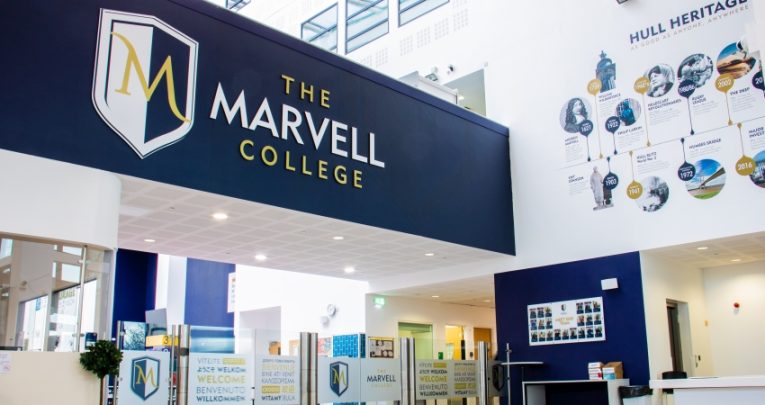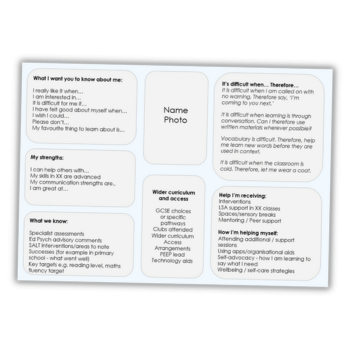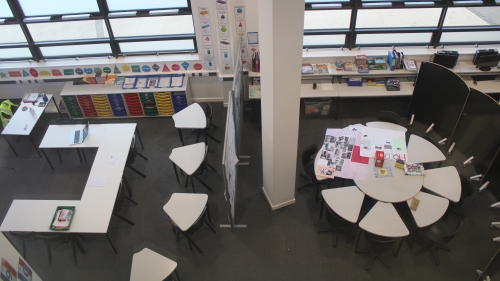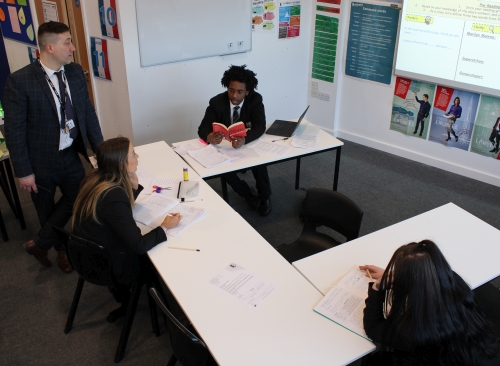Alternative provision – “It’s a support, not a sanction”

With their local AP becoming increasingly less viable, headteacher Jake Capper and his colleagues took the step of creating their own…

- by Jake Capper

The Marvell College is a secondary academy located in the east of Hull with 1,250 students on roll. Approximately 70% come from households falling within the 10% most deprived households in the local area.
Given how many of our children come from challenging backgrounds, it can sometimes feel like we’re not a comprehensive school, even though we are. As things currently stand, however, we have a Good Ofsted rating and are heavily oversubscribed, with ever more Y6 preferences year on year.
I was appointed head on 1st May 2020, which was quite a baptism of fire. I arrived having previously served as deputy head at an Outstanding school in York, only to find that things worked differently here in almost every way.
Process of referral
Myself and my colleagues quickly came to realise how strained alternative provision was within the city. There were many children at Marvell who had what we call ‘commissioned AP places’ – whereby the school pays for them to attend AP so that specific needs can be met, or to potentially avoid permanent exclusion.
This prompted us to look at how we could keep more of our children within Marvell and part of our school community, so we set up some provision of our own that we call the ARC, based on our school values of ‘Ambition’, ‘Respect’ and ‘Courage’.
The purpose of this provision is to look after our most vulnerable children, with an overarching philosophy of ‘support not sanction’. We didn’t want it to be a place children would simply pass through en route to more ‘traditional’ AP, and we were careful to make sure that those children accessing the ARC weren’t just those with behavioural issues. Some are, but others have anxiety, some have mental health issues and others have some gaps in their schooling.
Students can only access the ARC following a referral process overseen by our pastoral leaders; teachers can’t just send them there.

Rapid reintegration
The ARC itself is essentially a massive classroom containing various therapy aids, computers and a designated learning area with an IWB, alongside a reflection room for students who are struggling with their behaviour.
We have a full-time mental health officer based at the ARC, and two dedicated intervention classrooms that are used by some of our KS4 AP students to receive on-site schooling in some subjects, before heading off-site several days per week for courses in motor vehicle maintenance, construction and hairdressing, among other activities.
Some of our vulnerable children may go the ARC for extended periods, while others may just require a one-to-one with our mental health officer before returning to school or home, depending on their bespoke programme.
The process whereby someone is referred to the ARC varies. If a pupil hasn’t been attending school, our educational welfare officer will meet with their family to talk about how we might try and include them into school. For individuals who could be described as ‘anxious attenders’, the likelihood is that they’ll spend some time in the ARC building up their confidence. When the ARC team feel that they’re ready, they’ll then gradually move to attending mainstream lessons.
In cases involving behaviour or an incident at home – bereavement, say – referrals tend to come via the pastoral team. At that point we’ll contact parents and carers, invite them in and talk them through the process of how the ARC operates.
When a student enters the ARC, their initial time there is very much tailored to them. For example, a pupil attending full-time for two weeks may complete a Boxall Profile and work with the team, talking about where they feel confident, what lessons they’re happy to attend, what lessons might be triggers for additional anxiety, or where they might struggle with behaviour. After that, they’ll be given a bespoke timetable.
If it’s agreed that a pupil should attend one or two lessons a day, the ARC team might accompany them to support either the pupil or the teacher. This is monitored carefully, and always with a view to increasing this lesson time once they’re ready. The idea of the ARC is ultimately to reintegrate pupils back into the curriculum as quickly as possible.

Balancing the mix
We do, however, have to be very careful in terms of the ARC’s capacity. We essentially see it as an A&E triage process, but we can’t deal with all of the issues we get. There are occasions when our need for the ARC unfortunately outstrips its capacity.
The team works especically hard not turn away anybody who needs the ARC’s support, but at the same time, we have to try and balance the mix of children using the room. We’ve never wanted the ARC to be a ‘sink area’; it’s support, not a sanction.
Because of that, we need to avoid situations where one child with anxiety may be sharing the space with numerous others who are there for reasons relating to their behaviour, which can involve working around pupils’ timetables. We’re also limited to having eight pupils in there at any one time due to staff numbers.
What we will do, however, is send curriculum teachers to the ARC at allotted times, because we don’t want the pupils there to miss out on core areas of the curriculum if we can help it. The small number of students also enables teachers to effectively offer bespoke lessons where needed.
Our school is in a difficult position. We have a great resource in the ARC, but some of these children are extremely vulnerable. Attendance, while improving in most cases, still isn’t quite where we want it to be, with the result that some students who should be in the ARC aren’t there.
We’ve often found with children who cause challenges that there are underlying reasons – perhaps they’ve missed time in the curriculum, fallen behind in their understanding and started to display challenging behaviours as a result. What the ARC gives us is a degree of flexibility in how we can respond – one that’s unusual in mainstream schools of our size in this type of community.
Jake Capper is headteacher at The Marvell College; for more information, themarvellcollege.com or follow @TMCHull
Time to reflect
James Krebs, assistant headteacher alternate pathways, reflects on the experiences of one previous ARC user…
Student A is a Y9 male who has multiple adverse childhood experiences and SLCN. He was admitted to the ARC due to an escalation of behaviours, including confrontation with staff, refusing simple instruction and absconding around school.
We sought to better understand student A and focus on his strengths as assets. After making some curriculum changes, we ensured that all teachers who taught him completed a restorative meeting facilitated by a colleague in the ARC.
The impact over six weeks resulted in student A accessing a full mainstream curriculum. There have been two lesson walk-outs (when he came to the ARC using his safe space pass, rather than absconding) and only one removal from a lesson due to behaviour. Parents have also noticed a significant difference in the way he manages emotions at home.







